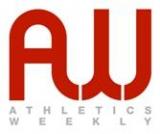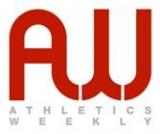Folders |
Improving breathingPublished by
In this final article in a four-part series, Robin McNelis looks at how to improve your breathing and thus your performanceHaving explored several problems with breathing in the previous articles in this series, in this one I am going to show you ways to make your breathing more efficient and hopefully improve your performance, whether you have a breathing problem or not. If you have followed the previous articles (find links to these below) you should have taken the Nijmegen questionnaire, identified and modified any trigger factors and practised the normal breathing at rest” routine. Hopefully this has given you a greater understanding of breathing and helped you form a solid foundation to build upon. Below, I have listed several techniques that can help improve performance in the same way that weights or core exercises can help athletic activities. Nose breathingAt increasing levels of exertion, nose breathing can make your breathing stronger. Once you have progressed to being comfortable at breathing with good technique at slow and steady paces, you can push the limits by increasing your pace to the maximum level at which you can continue nose breathing. Breathing through your nose means that the air is filtered, heated and humidified as it passes through the turbinates in your nose and allows chemicals to be released that help to open airways and make breathing easier. However, all this means you are breathing against more resistance than if you were breathing through your mouth, so your breathing muscles are working harder. This harder work can lead in time to your breathing muscles becoming stronger and more efficient. The technique allows the diaphragm to remain the main muscle of breathing further into exertion before the accessory muscles around the neck and shoulders kick in. Accessory muscles are inefficient and steal blood from working muscles, so by maximising the use of the diaphragm athletes perform better. Inspiratory muscle trainingThis is gaining in popularity among many dedicated athletes of all levels to try to squeeze out as much improvement as possible from their training regime. Dubbed as dumbbells for your diaphragm” by Powerbreathe, the idea is that you breathe in against a resistance for 30 breaths twice a day to strengthen your breathing muscles resulting in improved performance through increased respiratory muscle strength and endurance. The Powerbreathe devices (powerbreathe.co.uk) have adjustable levels of resistance on each of their models so you can progress your programme just like you were increasing your weights. Nasal rinsingThis sounds unpleasant to most people, but it helps to maintain clear and clean nasal passages and sinuses, making nasal breathing easier at rest and during exercise. It also helps if your breathing is affected by airborne allergens or if you suffer regular sinus or nasal infections. For more information and to view products and instructions see neilmed.co.uk.
|
You must be a member to access that page







 One for the future?
One for the future?